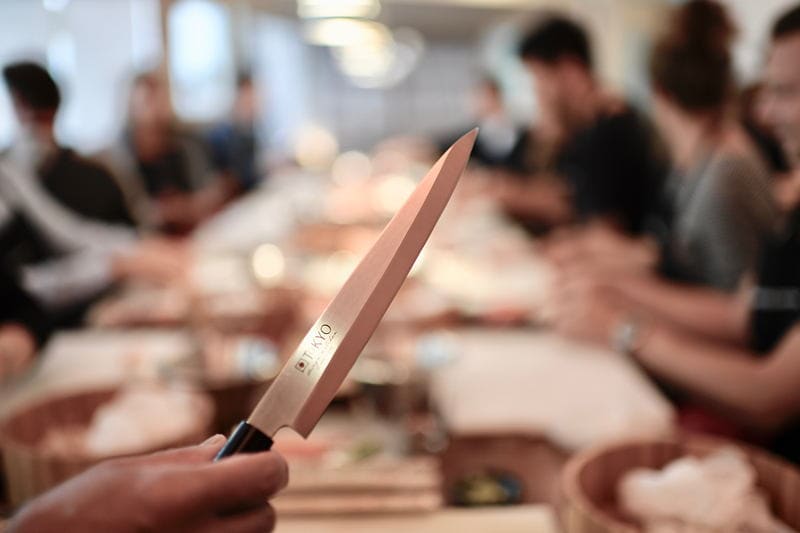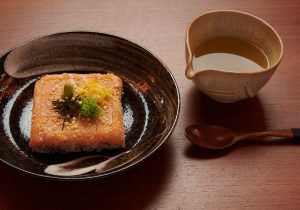In loose succession we report in our SUSHIYA blog a lot about the topic of Japanese knives and cutting techniques.
The first part was Japanese knives and cutting techniques - an introduction. The second part was Cutting flavor (and the third was handling Japanese knives). To accompany our sushi courses for beginners and advanced, here is the fourth part of the series.
JAPANESE KNIVES & CUTTING TECHNIQUES - CUTTING SHAPES
In Europe, French is still considered the "kitchen language" and so many terms such as Brunoise (small cubes) and Julienne (long thin strips) can be found. In Japanese, you often find many more terms for one thing than in Western countries. For example, there are at least a dozen terms alone to describe different types of rain.
And since people in Japan are convinced that the flavor is "tickled out" of a product by cutting it, there are also many different shapes.
But what is so special now? In Western cookbooks, it is simply called "slicing" or "cutting into THIN slices". In Japanese, each cutting technique has its own name, including such figurative ones as
OVERVIEW OF JAPANESE CUTTING TECHNIQUES
Designation | Description | For example for | |
| Kushigatagiri | くし形切り | Like the tines of a comb | Cabbage, onion, tomato, lemon, persimmon |
| Rangiri | 乱切り | "Random" cut, but it is not really random | Cucumber, carrot, radish |
| Hangetsugiri | 半月切り | Crescent | Cucumber, radish, lotus root, carrot |
| Ichogiri | いちょう切り | Gingko leaf cut | Radish, carrot |
| Sengiri | 千切り | Cut into a thousand parts | Cabbage, ginger, radish, carrot |
| Tanzakugiri | 短冊切り | "Paper Strips" | Radish, carrot |
| Sasagaki | ささがき | Bamboo leaf cut | Gobo, Carrot |
| Hana Renkon | 花レンコン | Lotus root flower | For lotus roots |
| Hosogiri | 細切り | Julienne | |
| Hyoshigigiri | 拍子木切り | rods with square cut, about 1 cm thick | Radish |
| Koguchigiri | 小口切り | Thin rondelle | Leeks, spring onions |
| Mijingiri | みじん切り | Fine cut/chop | Onions |
| Nanamegiri | 斜め切り | Slice diagonally | Leeks |
| Naname Usugiri | 斜め薄切り | Cut diagonally into thin slices | Leeks |
| Sainome-giri | さいの目切り | Cube with sides of approx. 1 cm | Miscellaneous vegetables |
| Sogigiri | そぎ切り | Cut vegetables or meat diagonally | |
Then there are the decorative cuts for shiitake, radish and carrots, for example.
Designation |
Description |
For example for |
|
| Hanagiri | 花切り | Flower shape | Mostly carrots |
| Nejiri Ume | ねじ梅 | "Plum blossom cut" | mostly carrots |
| Tazune | 手綱 | Horse reins | Konnyaku, Chikuwa |
When preparing vegetables such as radishes, potatoes, and the like for "stews" (nabe お鍋), one breaks the edges to prevent them from breaking out during cooking. This is called mentori.
By the way, these cut shapes require a lot of practice. In our restaurant sansaro you often get very finely cut leeks on the appetizers or white radish ("shirage") to sashimi - observe carefully in other "Japanese" restaurants how thickly leeks and radishes are cut there...
Do you really need so many different knives? Maybe not, but in Japan they attach great importance to every detail and so of course they always want to have the best tool. Therefore, the next part is about different knife shapes and their use.


